How Knee on Belly Control Works – Nick Avery
~Discomfort is not caused by weight, it is caused by Pressure.~
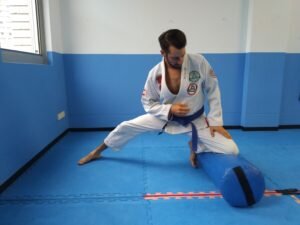
If I want my opponent to be so focused on the discomfort I’m causing that they forget they own a neck and arms, I need pressure.
![]()
Pressure (P) is defined as Force (F) divided by Area (A). A bed of nails doesn’t kill people due to this relationship. Spread the force over a large area (many nails) and you don’t end up with a pierced liver.
How can I create more pressure?
Option 1. Increase the Force
I could grab my opponents pants and collar and pull up, increasing the force. However, this requires energy and oxygen that I’m trying to conserve, and anchors me to my opponent. I can also adjust my support (right) leg. The further away my supporting foot is from my knee on my opponent, the more force I am applying into my knee. My weight is distributed and supported by my two legs. I can only alter the distribution of the weight.
Lets look at Stage 1: With the Support leg close by, I have about 50% of my weight on each leg.
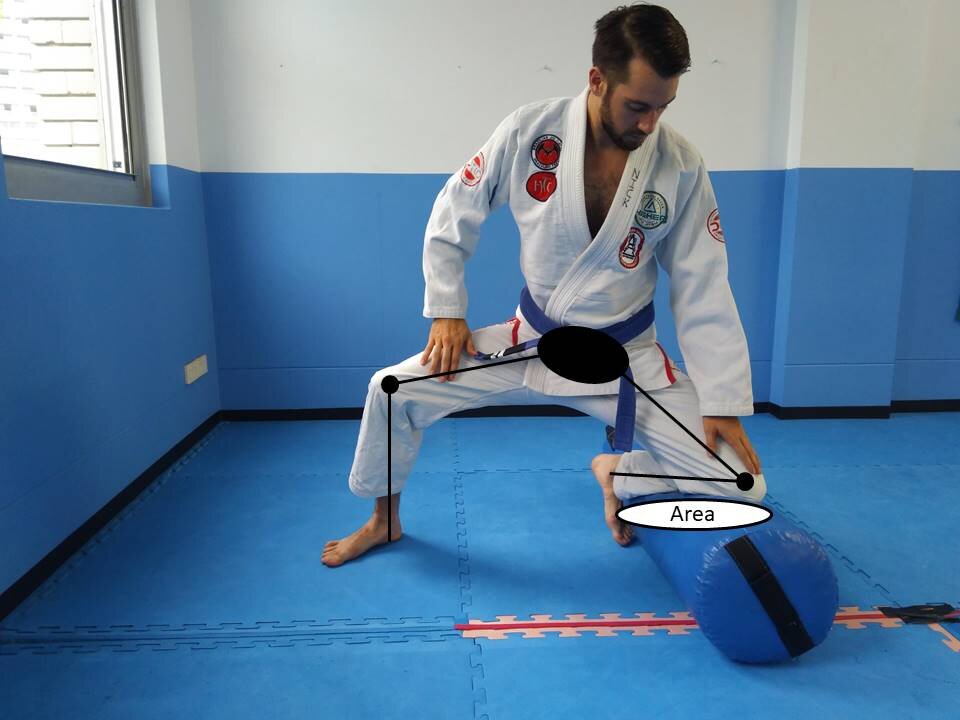 Stage 1, Minimal Force, Max Area
Stage 1, Minimal Force, Max Area
When we look at the below force diagram, we can see my foot is close to my hip joint, there is a small effective lever allowing me to push down into my foot very easily. The Muscle Pull represents my glutes and hamstrings working to push my foot down. Note that all the forces are vertical!
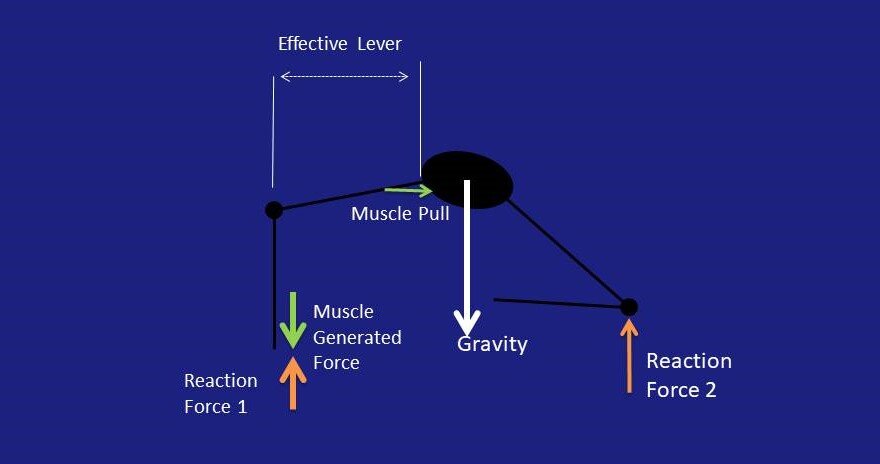 Stage 1 Force Diagram
Stage 1 Force Diagram
Enter Stage 2: As my foot extends further away from my hip, the lever is increasing, and it becomes harder to push my foot down. As a result, I am distributing more weight onto my opponent.
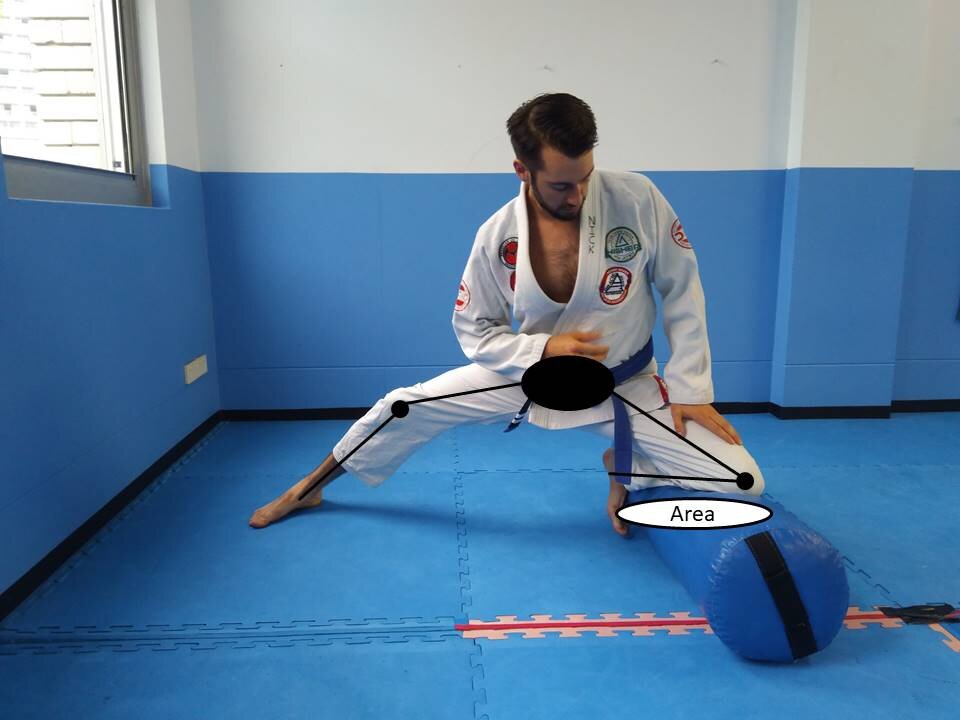 Stage 2, Max Force, Max Area
Stage 2, Max Force, Max Area
With the change in angle of the support leg, I am now forced to push sideways in addition to pushing down. We break the force into horizontal (x) and vertical (y) components. Now the vertical force (Fy) is reduced. The horizontal force (Fx) can transfer through my bones in into my opponent.
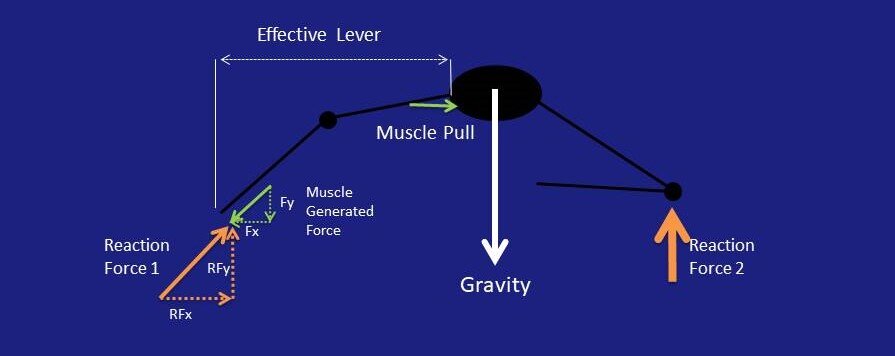 Stage 2 Force Diagram
Stage 2 Force Diagram
Option 2: Decrease the Area
In Stage 1 and 2, my shin and foot have a large contact area on my opponent. Enter Stage 3, Where I lift my foot up so just the knee is on their belly. The contact area is reduced. Pressure has increased again, with minimal effort.
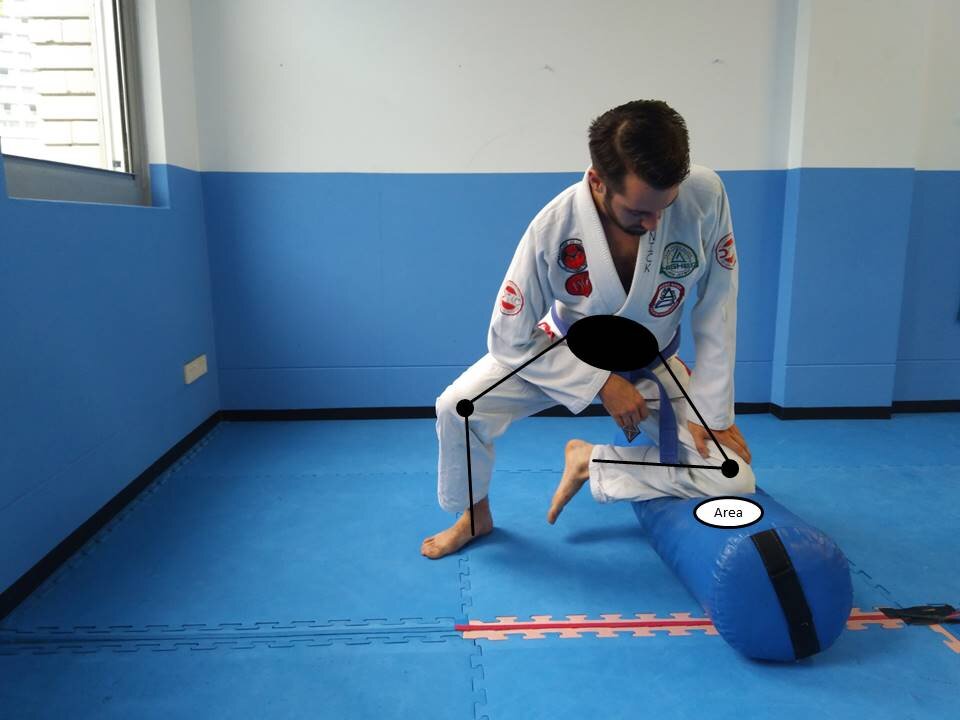 Stage 3, Minimum Force, Minimum Area
Stage 3, Minimum Force, Minimum Area
Enter Stage 4, with my support leg extended and my just my knee on my opponent. I now have maximum pressure without working harder. You can see the deflection in the heavy bag in this picture as well.
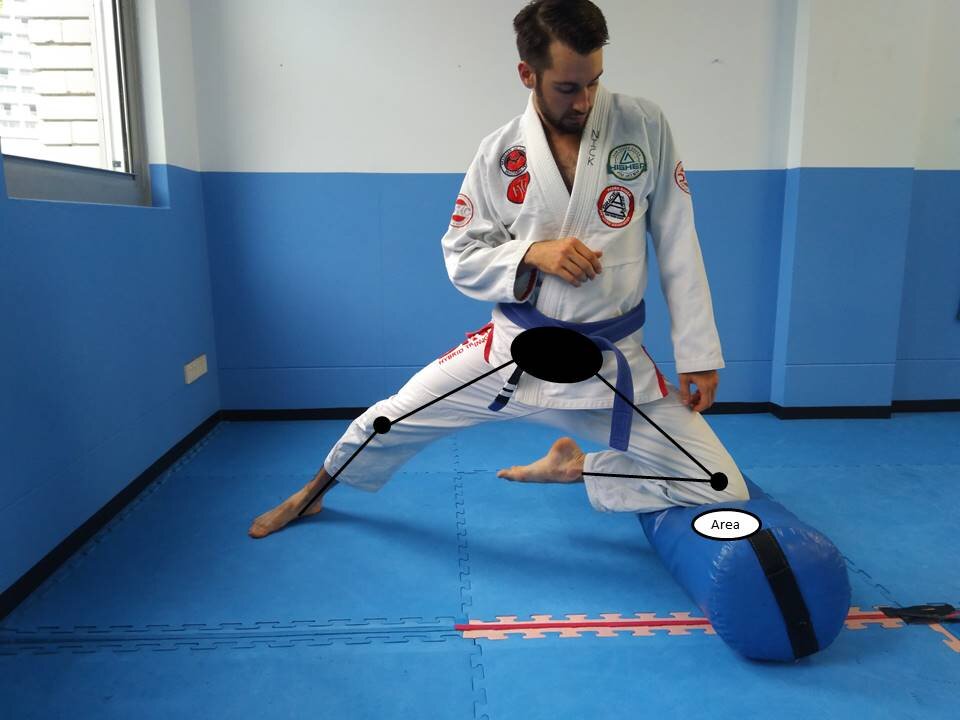 Stage 4. Maximum Force, Minimum Area
Stage 4. Maximum Force, Minimum Area
How much pressure am I applying at Stage 4?
My body has a mass of 70kg. Gravity is trying to accelerate me at :
![]()
![]()
If I distribute 90% of my weight onto my opponent, I have about 618N through my knee.
Reduced Area Circle:
![]()
![]()
78,726 pascals means nothing to normal people, lets make it more useful! Divide by 100,000 and you get 0.787 Bar, so just under one atmosphere, or a nearly flat tire. Doesn’t sound very painful right?
Consider this: normal systolic blood pressure is about 120 millimetres of mercury (mmHG). Convert 0.787 Bar into mmHG, and you get 590mmHG! Almost 5 times your blood pressure!
What about lungs? According to a 2005 lung study maximum exhalation and inhalation lung pressures roughly ranged from about 60 to 90 cmH20. [1] (Yes, more different units) Convert 0.787 Bar to medical units and we get 802 cmH20. About 9 times the pressure you can generate! Now, your lungs have a much different area, but this is why it’s hard to breath when someone has a knee on your chest/ diaphragm.
[1] Lausted, Et Al. Maximum static inspiratory and expiratory pressures with different lung volumes. Available Here


